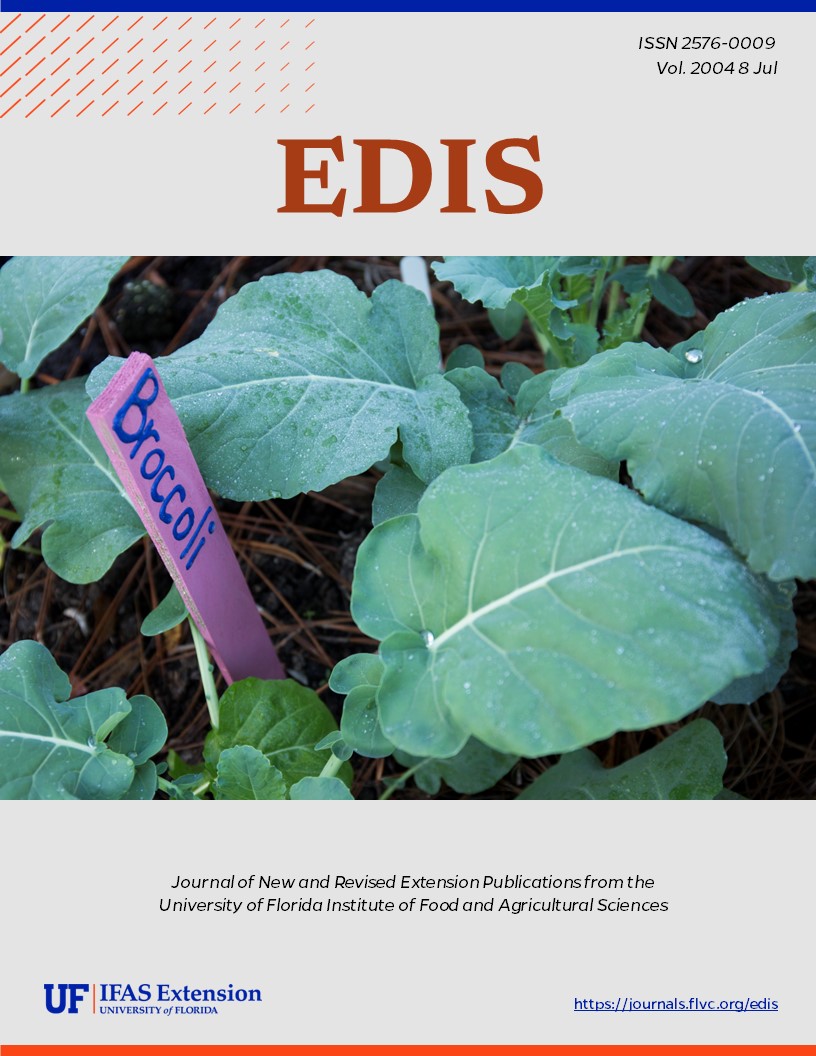Abstract
The objectives of this document (mainly based on Alvarez, et al., 2003) are to illustrate the use of an economic index in selecting clones that are somewhat ambiguous in merit (mid-to-low rankings in TCA or SC) and to show how the relationship between TCA and SC can differ when viewed from an economic, rather than a biological, perspective. This is EDIS document FE476, a publication of the Department of Food and Resource Economics, Florida Cooperative Extension Service, UF/IFAS, University of Florida, Gainesville, FL. Published May 2004.
References
Alvarez, J., C.W. Deren, and B. Glaz. 2003. Sugarcane Selection for Sucrose and Tonnage Using Economic Criteria. Proceedings of the Sugar Cane International Conference. November-December 6-10.
Brown, A.H.D., J. Daniels, J., and B.D.H. Latter. 1969. Quantitative Genetics of Sugarcane. II. Correlation Analysis of Continuous Characters in Relation to Hybrid Sugarcane Breeding. Theoretical and Applied Genetics 39:1-10. https://doi.org/10.1007/BF00283078
Deren, C.W. 1995. Genetic Base of U.S. Mainland Sugarcane. Crop Science 35:1195-1199. https://doi.org/10.2135/cropsci1995.0011183X003500040047x
Deren, C.W., J. Alvarez, and B. Glaz. 1995. Use of Economic Criteria for Selecting Clones in a Sugarcane Breeding Program. Proceedings of the International Society of Sugar Cane Technology 21(2):437-447.
Glaz, B., J.D. Miller, P.Y.P. Tai, J.L. Dean, and O. Sosa, Jr. 1987. Evaluation of New Canal Point Sugarcane Clones, 1986-87 Harvest Season. Agricultural Research Service, United States Department of Agriculture, Washington, D.C. (September).
Hogarth, D.M. 1987. Genetics of Sugarcane, in Sugarcane Improvement Through Breeding, edited by D.J. Heinz, pp. 255-271. New York: Elsevier. https://doi.org/10.1016/B978-0-444-42769-4.50011-4
Kang, M.S., J.D. Miller, P.Y.P. Tai. 1983. Genetic and Phonotypic Path Analysis and Heritability in Sugarcane. Crop Science 23:643-647. https://doi.org/10.2135/cropsci1983.0011183X002300040010x
Kang, M.S., O. Sosa, O., and J.D. Miller. 1989. Path Analysis for Percent Fiber in Cane and Sugar Yield in Sugarcane. Crop Science 29:1481-1483. https://doi.org/10.2135/cropsci1989.0011183X002900060032x
Mariotti, J.A. 1972. Association among Yield and Quality Components in Sugarcane Hybrid Progenies. Proceedings of the International Society of Sugar Cane Technology 14:297
Miller, J.D., N.I. James, and P.M. Lyrenne. 1978. Selection Indices in Sugarcane. Crop Science18:369-372. https://doi.org/10.2135/cropsci1978.0011183X001800030004x
Robison, L.J., and P. Barry. 1996. Present Value Models and Investment Analysis. Northport, AL: The Academic Page.
Simmonds, N.W., and D.I.T. Walker. 1986. An Economic Selection Index for Sugar Cane Breeding. Euphytica 35:311-317. https://doi.org/10.1007/BF00028569
Unless otherwise specified, articles published in the EDIS journal after January 1, 2024 are licensed under a Creative Commons Attribution-NonCommercial-NoDerivs 4.0 International (CC BY-NC-ND 4.0) license.

